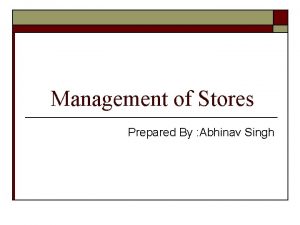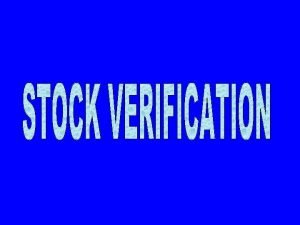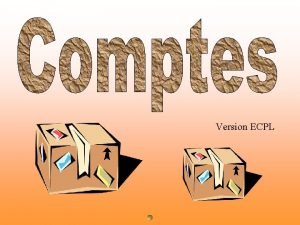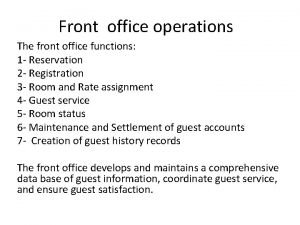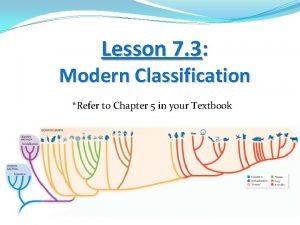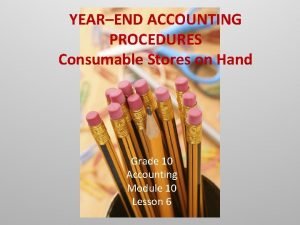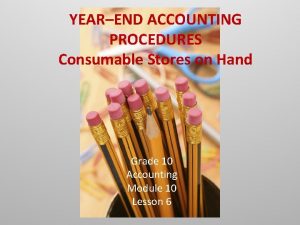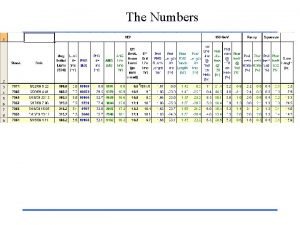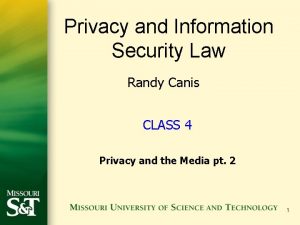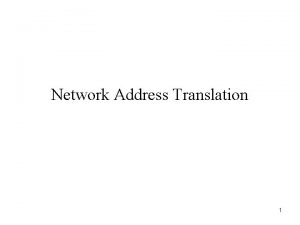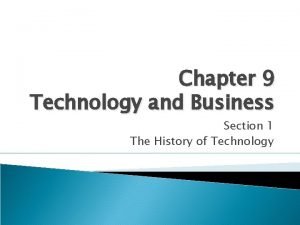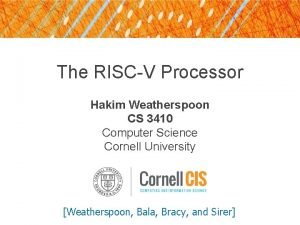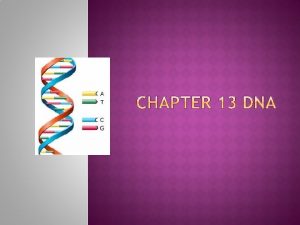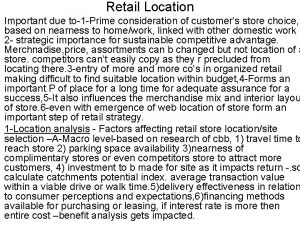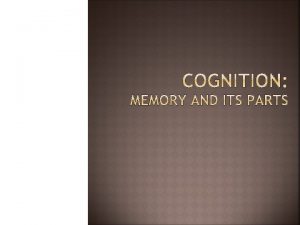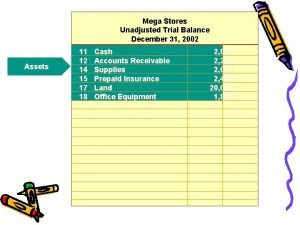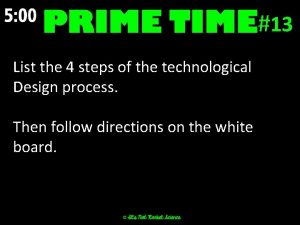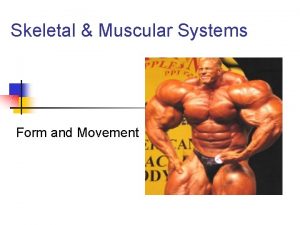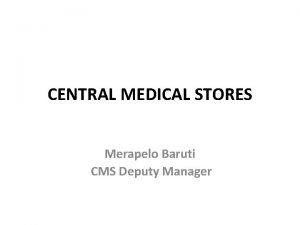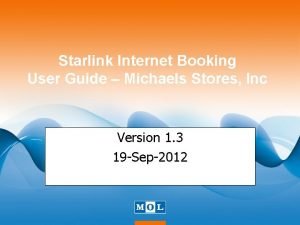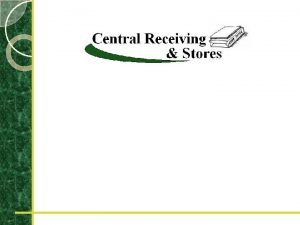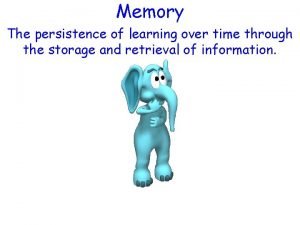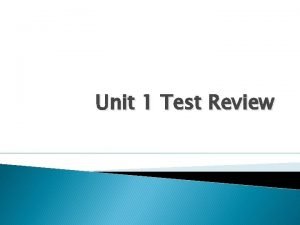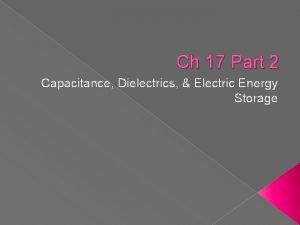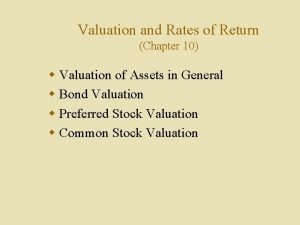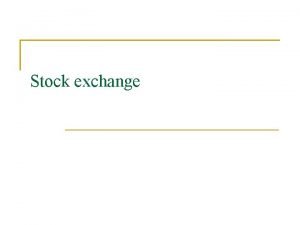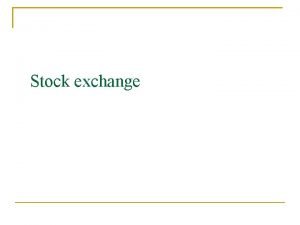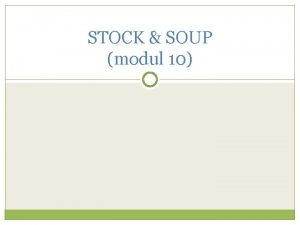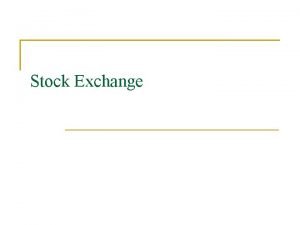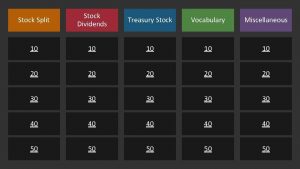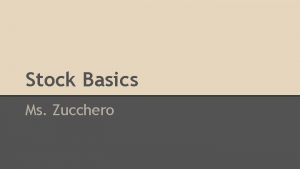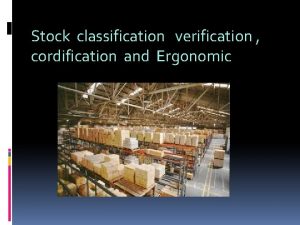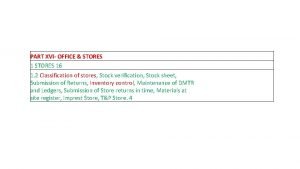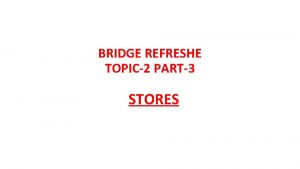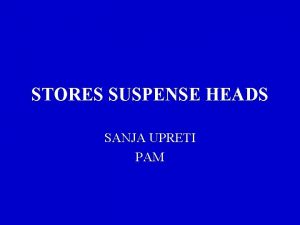OFFICE STORES 1 2 Classification of stores Stock




















































- Slides: 52

OFFICE & STORES 1. 2 Classification of stores, Stock verification, Stock sheet, Submission of Returns, Inventory control, Maintenance of DMTR and Ledgers, Submission of Store returns in time, Materials at site register, Imprest Store, T&P Store. PERIODS- 2

Stock Verification • The Stores, whether in a Stores Depot or with a department, should be verified by accounts Stock Verifiers as per the following periodicity (3301 -S) (1) Materials-at-site of works once in a year. (2) Stores with Imprest Holders once in two years. (3) All tools and plants once in three years.

Material at site/depot • All materials in a depot whose accounting is brought under computerization are verified as under : • i) Category `A' Items : All items having an annual usage value of Rs. 10 lakhs or more ---once in SIX months. • ii) Category `B' Items : All items having an annual usage value of Rs. 1. 5 lakhs and above, but below Rs. 10 lakhs----once in a YEAR.

Material at site/depot… • iii) Category `C 1' Items: All items having an annual usage value of above. Rs. 25000/ but below Rs. 1. 5 lakhs---- once in TWO YEARS. • iv) Category `C 2' Items : All items having an annual usage value of Rs. 25000/and below ---Once in Two YEARS. • v)`D' Items : All items that have had no issues for twelve months and over ------ once in a YEAR.

Stock holder certificate: format • "Shri. . . . . (designation) is authorized to attend the day to day stock verification on my behalf who will present all materials/stores to the stock verifier for physical verification, sign the Field Book on my behalf which will be accepted and countersigned by me. The results of verification as arrived at and the day to day certificate as recorded by my authorized representative will be binding and acceptable to me. " • After the above preliminaries are completed the ASV/ISA will commence his stock taking selecting items himself from the stores of the SSE.

Stock holder certificate: format • After the above preliminaries are completed the ASV/ISA will commence his stock verification. In doing so the ASV/ISA should ensure that: • i) The description of each item verified is written neatly and fully in the Field Book. The unit column is filled up, location of the items verified is indicated mentioning godown number, Almirah number etc; date of verification is clearly shown in the F. Book.

Stock holder certificate: format ii) The item of stores borne on capital account (Estimate work) and also on Revenue account are verified simultaneously and the total stock verified is distributed to the different heads while adjusting the results of verification. iii) In respect of cement, separate accounts for sweeping, clodded and screened cement are maintained.

Stock holder certificate: format iv) Remarks like broken, damaged, cracked and the like as noticed during stock taking are clearly noted in the F. Book. against the relevant item and got accepted by the stock holder. v) No item is left unverified and on completion of verification a final certificate is obtained from the stock holder in the following lines.

Stock verification completion certificate: format • "This is to certify that the entire stock of all the items of stores in my custody have been fully produced to the stock verifier and verified by him correctly in my presence or in the presence of my authorised representative. All receipts and issues prior to verification have been completely posted in the ledger accounts. All receipts and issues during the course of verification have been taken into cognizance by the SV and noted in the F. B. The results of verification are accepted by me as correct. "

Physical stocktaking: i) All materials in the SE(p. way)'s Head. Qrs. station should ordinarily be taken up for verification first before proceeding to check those along the section. • RAILS OF DIFFERENT TYPES AND STANDARD LENGTH : • RAILS USED AT PRESENT : • DIFFERENT TYPES OF POINTS & CROSSINGS: LAYOUTS ETC. • Component parts of crossing: • Component parts of Switch : -

For wooden layout only • Complete CST-9 sleeper comprises of • 1) CST-9 Plate = 2 Nos. ( ordinary or reverse Jaw ) • 2) Long tie bar = 1 No. • 3) Split cotter = 4 Nos. • 4) Two ways key = 2 Nos. ( Not required in CST-11 sleepers when pandrolclips 2 Nos. are used. ) • In Steel trough sleepers, the following are required • 1) One steel trough sleeper • 2) M. S. loose Jaw - 4 • 3) Two Way Keys - 4 Or Pandrol. Clip - 4 ( in high speed route only ) & rubber pads - 2 ( M. S. Jaw and keys not required ).

• Types of Bearing Plates & component fittings used in wooden layout • Fish Plates- types and their use. • Different types of Spikes & their use • Different types of Wooden Sleepers : • Types of keys:

Surplus P. Way materials held on line. Classification, maintenance of Accounts and disposal. • a) All P. Way materials released or left over after completion of works/renewal etc. are termed as "surplus stores-P. Way". Such surplus stores normally comprise of the following. • i) New materials remaining un-utilised and no longer required • ii) Second hand materials which can be re-used. • iii) New/second hand obsolete materials. • iv) Those actually scrap being not usable.

Daily Material Transaction Register (DMTR). • A Daily Material Transaction Register (DMTR) in the prescribed pro-forma shall be maintained by all Inspectors. All receipt of stores in the Inspectors Office and all issues of Stores from the office are to be entered in this book along with a record of other transactions that happen along the line, based on the field day books of receipts and issues.

• The DMTR Book should be specially printed with mechanized serial number and it should be maintained separately for the financial year. • It is reiterated that no direct posting of ledger is done for any of the above categories of stores. All transactions must first appear in the DMTR and then transferred to the ledgers, giving simultaneously a cross reference in the DMTR in the relevant column. Please refer para 3. 62 (a) of this Manaul for detailed notes.

REGISTERS of depot holder : FOR VERIFICATION. • Index of registers relating to stores : The register under this title will be maintained allotting separate pages for recording particulars of registers/accounts relating to various categories of stores furnishing the following particulars on the left-hand page. • a) For specific works : • 1. Sl. No. • 2. Name of work • 3. Reference to sanction No. & date • 4. Date of commencement • 5. Date of completion • 6. Completion report No. & date • 7. Dated initials of the store holder

MATERIAL-AT-SITE-ACCOUNT : • Materials obtained for specific works are treated as "CHARGED OFF" stores and should be kept outside the account of any other category of stores. • Materials issued to work, the account of which is kept by subheads in the register of works, if not consumed on the work immediately on receipt at the side of work should be temporarily held at charge of a sub-head of work known as the "MATERIALS-AT-SITE ACCOUNT".

• In accordance with paras 1436 to 1451 -E, separate Materials-at -Site accounts are required to be maintained only in respect of Track Relaying or Renewal Works costing above Rs. 3 lakhs each and in the case of other works costing above Rs. 1 lakh each.

Procedure for material at site • a) Immediately on receipt of a sanctioned estimate for a work, the SE incharge of the work shall open a register to be called "MATERIALS- ATSITE LEDGER" • b) A daily numerical record of receipts and issues of materials received for the work should be maintained in Form E. 1441 for the materials-atsite account in the "Materials-at-site Ledger" • i) Material "RECEIPTS" together with the date, quantity, • ii) Materials "ISSUES" are , the date, quantity • iii) Materials released from the work should be recorded separately date and quantity as "RECEIPTS“& "ISSUES". • iv) Materials-at-site returned to the Stores Depots,

• In respect of scattered renewals, the materials-at-site ledger should be opened afresh every year on 1 st April, and closed on 31 st March of the following year. • The Transfer voucher should be prepared in the Divisional Engineer's office. • The completed ledger should be returned to the Divisional Engineer's office for record. • HALF YEARLY RETURN: a complete material-at-site return for all the items at the end of each half year ending September and March will also be submitted.

CHECK LIST OF MATERIALS AT SITE RETURN AND ACTION IN DIVISIONAL ENGINEER'S OFFICE : • i) The opening balances should be checked with the closing balances of the previous quarterly return. • ii) The receipts during the quarter should be checked with the relevant issue notes, stores summaries, adjustment memo and other receipt voucher. • iii) As regards materials returned to the Stores Depot or Transferred elsewhere, the correctness of credits should be checked with the relevant acknowledged copies of advice notes of returned stores wherever received or adjustment memo. • iv) The arithmetical accuracy of the return should be checked throughout.

• Adjustment Register: • Any alteration due to errors in posting and balancing in the numerical accounts should be rectified by the medium of adjustment register on form G 77 B. Erasures, over-writings and alterations in the numerical ledgers are prohibited.

• Register of losses: • This register should record the full particulars of losses indicating inter-alia the name of the person, if any, held responsible, recoveries effected and reference to write off sanction. If there are no cases in any month, a Nil entry should be made. The register shall be maintained in the prescribed form.

• Loan Register: • Materials issued on loan should be entered in this register preserving the acknowledgment from the party taking the material. It should also be ensured that the materials loaned are collected without undue delay.

• Kerosene Oil Register: • A separate register should be opened for the transactions of kerosene oil. This should contain monthly issues of K. Oil. made to Gatemen, night patrolmen, watchmen etc. together with their signatures. the consumption of K. Oil. to different types of lamps should be adopted as per sanctioned scale.

• TRANSFER ADJUSTMENT VOUCHERS: • All transfers of materials from one store-holder to another under competent sanction should be effected by the preparation and submission of transfer vouchers on form RE 9 B. Similarly, in the case of materials being required for a work under a head of account different from that to which it was originally allocated, the materials may be transferred to the new head of account, under competent sanction, by the preparation of Transfer Voucher (RE 9 B). Acknowledgement copies of the transfer vouchers should be pasted to the office copies.

• Miscellaneous Register: • A separate register should be maintained for miscellaneous materials like winch tape, waste cotton, matches etc. , issued to gatemen, watchmen, night patrol men, etc. , under their signatures. The consumption of miscellaneous materials should be adopted as per sanctioned scale. The register for miscellaneous materials shall be maintained similar to K. Oil register.

• Empties Register: • A separate register shall be maintained for empties. This will contain receipts and issues of the empties as and when such transactions take place in the DMTR. Particulars of containers received with oils, paints, petrol and cement, etc. under issue notes, challans should be entered in the remarks column of the register. When oils, paints, etc. are despatched to other Inspectors, the number of containers in which they are sent are to be specifically mentioned in the challans so that both the parties viz. consignee and consigner may post them in their respective accounts and register. A quarterly return is to be submitted by the SE/JEs.

• Register of Claims : - A separate register shall be maintained to record the particulars of claims. This should contain all claims preferred for short and non-delivery of stores and final action taken to clear such claims. • Sanction Schedules : The sanctioned scale of imprest materials, consumable stores, garments, etc. as intimated by the Divisional Office should be recorded in the relevant ledgers. The schedules should be preserved carefully so that they are readily available for scrutiny by inspecting officials.

• Return of scrap and unserviceable materials : Such materials as are surplus to requirements after classification by the AEN should be sent to the Stores Depots under cover of the advice notes of returned stores on form DS 8. All the acknowledgement copies should be pasted with the office copies. • Guard files for Vouchers : All receipts, issue vouchers, issue notes or challans and RE 9 Bs should be serially filed in a guard file as per the DMTR so as to facilitate easy and effective check or separate files should be maintained for all the vouchers. • Money Value Register Etc. ,

DISPOSAL OF STOCK SHEETS • Scrutiny and disposal of Stock Verification Reports : • Scrutiny of remarks offered by the stock-holder in respect of discrepancies reported through stock sheets issued by stock verifier or ISA or reported through departmental stock verification sheets is an important phase of work assigned to the ISA. • There is no rule relating to scrutiny of stock sheets. Paras 3262 -S & 3263 -S contain broad guidelines for the scrutiny of explanations offered for the discrepant items reported through stock sheets. In fact, scrutiny of stock sheets is a matter of prudence on the part of the ISA, who must keep in mind the following facts:

• 1) knowledge of materials/stores and their utility/use. • 2) know the unit of accountal of materials/stores and the method of receipt issue and accountal of the different materials. • 3) knowledge about the scope for domestic use and of the commercial utility of different materials. • 4) knowledge about the utility of different scrap items of stores. • 5) know the method of stock verification of items of stores in stock sheets under scrutiny.

Guidelines : FOR DISPOSAL OF STOCK SHEET • While scrutinising stock sheets, the ISA should see the following after ensuring that the stock sheets have been countersigned by the competent authority as per schedule of powers. • i) The explanations recorded against discrepancies represent facts. • ii) The explanations are clear intelligible and definite. Wherever necessary, documentary evidence should be called for. • iii) That independent explanations have been furnished against individual discrepancies. In exceptional cases where sufficient justification exists for clubbing up of items of similar nature and use having scope for issue of one for the other or accountal of one in the ledger account of another may be admitted (i. e. understanding of the possibility of cross-issue or cross-posting is vital).

• iv) Adjustment between dissimilar items should not be considered. Adjustment between analogous items where sizes only differ may be admitted up to 2% of the transactions since the date of last verification, accounts or departmental. Any bigger difference must be taken up and if necessary, the ISA should check up the stock-holder's records to ensure the correctness and appropriateness of the explanations offered by the stock-holder. This is a guiding principle and not a rule to be applied without considering nature of the item & its nature of transaction.

• v) Large differences in respect of items accounted for in numbers should not be accepted as a matter of routine, even though the same may be within the normally acceptable percentage limit admitted on retail transactions. • vi) Shortages arising out of the neglect of the sub-ordinate holding charge of stores or of any other staff, the amount of loss involved has to be regularised by recovery from the staff at fault (Amount so recovered with the particulars of recovery should be noted in the register of recoveries maintained for the purpose).

• vii) Shortages arising out of breakage, leakage and similar other reasons in respect of which no staff is considered responsible will have to be written off by the competent authority duly concurred by the associated accounts where the value of loss exceeds (As per SOP) Rs. 1000/-. Memorandum of sanction for write off should be endorsed to Accounts and Audit. A Register of Sanctions is to be maintained giving the details of all the written off cases.

• viii) In the course of scrutiny of stock sheets any serious irregularity noticed or any other shortcoming in the method of receipt and issue accountal or any other procedural defects noticed should initially be brought to the notice of the Divisional authority with comments/observations, suggesting remedial measures and the correct procedure to be followed. Wherever necessary, serious or important cases are to be brought to the personal notice of the DRM/HOD according to the nature of the case. A separate Register has to be maintained for recording such Serious irregularities detected during the course of working of S. V. section as per the provision of 368 -AI.

Accounts Notes : • All discrepant items for which satisfactory explanations have not been offered by the executive should be incorporated in an Accounts Notes grouping all items of similar nature, where identical information is required. In this regard instructions contained vide paras 3266 -S and 3267 -s should be followed.

MONETARY POWERS TO CLOSE THE ITEMS OF STOCK SHEETS : • 1) ISA/Sr. ISA who is dealing with the stock sheets can close the items whose value is upto Rs. 1000/- directly based on his discretionary powers. While using the discretionary powers, ISA /Sr. ISA should always ensure the interest of the Railway finances and the items closed by his discretionary powers are always subjected to further scrutiny or check by the controlling officer.

• 2) The following are the monetary limits where the discrepant items of the stock sheets can be treated as closed by the authority concerned mentioned against each. • Monetary value of each item. Competent authority empowered to close the item. • Upto Rs. 1000/Sr. ISA/ISA. • From Rs. 1001/- and above. • Assistant Accounts Oficer/ Senior Accounts Officer/ Workshop Accounts Officer.

CLOSURE ADVICE • Once all the discrepancies have been satisfactorily explained all the closure advices should be sent immediately to the concerned Executive Officers immediately under the signature of Controlling Accounts Officer or concerned ISA/Sr. ISA with the approval of Controlling Accounts Officer duly endorsing a copy of the same to the concerned custodian also, so that the custodian would also receive the communication of closure forthwith.

Nature of Remarks/ Explanation usually furnished in the Stock Sheets : • From experience it has been noticed that discrepancies brought out in stock sheets both excesses and shortages are usually attributed to: • a) Retail Issues. • (b) leakage breakage. • (c) turn in scale and scale difference. • (d) receipts or issues omitted from accountal. • (e) excess found in stock verification, sources of receipt not known.

• (f) issued under emergent circumstances not documented. • (g) cross issue between two items. • (h) cross posting in ledger account one for the other. • (i) short receipt. • (j) shortage due to theft vide missing report No. so and so. • (k) found subsequent to verification and taken to stock through departmental verification sheet. • (l) issued to staff for temporary use not accepted by stock verifier or issued on loan etc.

DO NOT FORGET : • i) Excesses are more serious than shortage, since they may pave the way for out of the way practice by interested persons. • ii) ISA's responsibility is not only to comment but also to suggest improvement for constructive purposes. • iii) Time and energy should not be wasted concentrating on petty discrepancies or discrepancies involving small amounts. • iv) Even if a stock holder fails to explain discrepancy properly, on the available documents, if evidences are noticed justifying the shortage/excess, ISA may accept the same recording reasons.

• v) To check up the ledger account when in the course of scrutiny of explanations it appears that prima-facie, the same do not represent fact or doubt prevails as to the correctness of the explanations. • vi) To investigate heavy discrepancies particularly in respect of items of commercial utility and value. • vii) To ensure that the stock sheet under scrutiny has been prepared by the stock verifier correctly and the date of verification, ledger folio reference etc. , unit, F. Book reference, page reference etc. have been properly and correctly shown by the stock verifier in the respective column and that other columns have been correctly filled in.

Excess may be explained as Particulars to be furnished indicated below : • a) Materials received but not Party sending the material, voucher taken to account number date; quantity; how accountal was over looked; • b) Materials subject to fluctuate- Date and quantity in stock during actions of weather. the previous verification; quantity of material subsequently received. • c) Due to cross issues. Relevant coverage shown under other similar items. d) Materials issued but not Party, Voucher number; date; removed by Indenter. quantity, why was the material not removed, why adjustment D/Note was not prepared to write back the issues

• e) Error in verification. Description and quantity of the material is correctly included in the verification, reference to folio and item Nos. , quantity of shortages adjusted against such items. Has the error since been rectified through departmental verification ? • f) Other causes. Suitable remarks. • g) Cause of surplus not known. Defect in procedure, party at fault; action taken to avoid similar discrepancies in future.

Deficiencies may be explained as indicated below : • Cause of deficiency Particulars to be furnished. • a) Materials issued but not Party, Voucher No. , date, quantity accounted for. and why issue was not accounted for. • b) Due to cross issues. Relevant coverage noticed under other similar items ; S. V. sheet folio; item No. , brief description and size surplus quantity recorded. • c) Due to fluctuations of weather. Date of last verification and quantity then verified, qty. of material subsequently received.

• d) Materials lost in transit and Why the papers were not shown to accounted for under receipt. the SV for inclusion in the verified balance as per para 1228 -S, what action has since been taken to finalise the loss. • e) Materials escaping verification. Particulars of quantity, where it was lying and how it escaped verification. How the material has since been taken to account through departmental verification. • f) Loss due to theft, fire etc. Remarks same as for item (d) above

PROCEDURE FOR RECOVERY OF VALUE OF STORES FOUND SHORT DURING STOCK VERIFICATION : • Materials when found short with the custodians due to fraud or misappropriation on the part of the employee, value should be assumed at the market rate or average book rate whichever is more duly adjusting for depreciation plus 7% towards freight and incidental charges plus 12. 1/2% for supervision charges over the total cost i. e. prime cost, freight and incidental charges on the analogy of provision of para 2328 -S & 2395 -S.

• Where materials are found short with the custodians due to defective or irregular accounting of negligence to observe the prescribed procedure for custody and accountal of stores and recovery for such loss should be made from the employee on the value at book rate or market rate at the time of detecting of the shortage whichever is higher plus 7% towards freight and incidental charges. • In respect of ISC items the actual freight from port to the site may be worked out instead of the flat rate of 7. 1/2% for freight and incidental charges.

• Thank You
 Advantages of decentralized stores
Advantages of decentralized stores What is stock verification
What is stock verification Features of preferred stock
Features of preferred stock Stock sauce
Stock sauce Characteristics of corporate bonds and stocks
Characteristics of corporate bonds and stocks Stock final de marchandises
Stock final de marchandises Factory office plan
Factory office plan What is front office operation
What is front office operation Eager learning
Eager learning Manifold tabulation
Manifold tabulation Traditional classification vs modern classification
Traditional classification vs modern classification Is consumable stores on hand an asset
Is consumable stores on hand an asset What is consumable stores in accounting
What is consumable stores in accounting Which macromolecule fights disease
Which macromolecule fights disease Tesco perceptual map
Tesco perceptual map Swot analysis of davao region
Swot analysis of davao region Mass marketers such as target and venture stores
Mass marketers such as target and venture stores Fakta om alexander den store
Fakta om alexander den store Milland village shop
Milland village shop Stores numbers
Stores numbers Full-line discount stores _____.
Full-line discount stores _____. Jordan v jewel food stores inc
Jordan v jewel food stores inc Store and transmit genetic information
Store and transmit genetic information News item text definition
News item text definition Nat device stores state information in translation table.
Nat device stores state information in translation table. Frog spleen
Frog spleen The most common technology staple in business today is the
The most common technology staple in business today is the Forward reference table(frt) is arranged like -
Forward reference table(frt) is arranged like - Drainage basin
Drainage basin What is a triple store
What is a triple store How 0x86 processor stores ox12345678 in memory?
How 0x86 processor stores ox12345678 in memory? Cell processes
Cell processes For service and retail stores a prime factor
For service and retail stores a prime factor Encodes stores and retrieves information
Encodes stores and retrieves information Ottawit mega stores inc
Ottawit mega stores inc Distributed data stores
Distributed data stores What macromolecule is used for contracting muscles? *
What macromolecule is used for contracting muscles? * Stores minerals and anchors muscles
Stores minerals and anchors muscles Family clothing stores
Family clothing stores Central medical stores botswana tenders
Central medical stores botswana tenders What part of the brain stores long term memory
What part of the brain stores long term memory Michaels stores edi
Michaels stores edi Uncc receiving and stores
Uncc receiving and stores Persistence of learning over time
Persistence of learning over time Lidl ev charging
Lidl ev charging The arrangement of a phenomenon across earth's surface is
The arrangement of a phenomenon across earth's surface is Iu surplus
Iu surplus Operational data store benefits
Operational data store benefits Section 7-2 eukaryotic cell structure
Section 7-2 eukaryotic cell structure A camera flash unit stores energy in a 150
A camera flash unit stores energy in a 150 Vendor held stock
Vendor held stock Intrinsic value per share formula
Intrinsic value per share formula Gun stock deformity
Gun stock deformity
